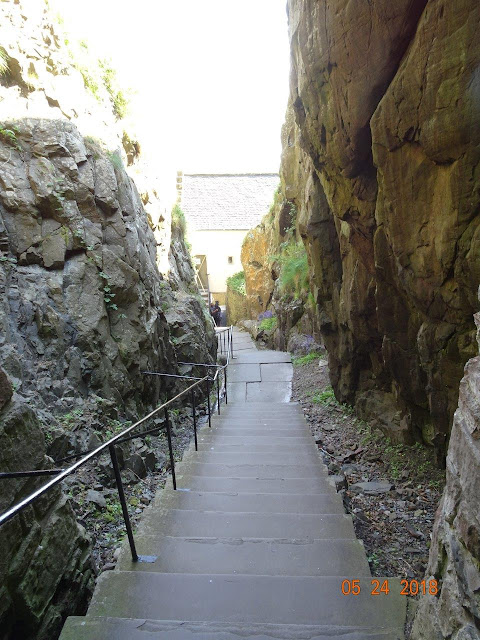First, this is the "Rest and Be Thankful" bridge at the top of the pass east of Inverary. It was a major pass that drovers used to take their sheep to market, and they were very happy to be done with the uphill part of their trip. The rest was easier because it was downhill, so this was a resting place.
Onward and downhill, with some magnificent scenery.
Instead lf a flagman on road construction areas, they have this traffic light system. You have to wait until your light is green to proceed on the single lane that is open.
There are some trees that have been planted for eventual harvest.
And unfortunately, they do clear cutting, which is really ugly and leaves bare hillsides.
After about three hours of driving, I got to Dumbarton Castle, which had been recommended to me. It was close to Glasgow and early afternoon, so I had plenty of time to explore. Dumbarton castle was built on a rocky crag along the river. The earliest version was built in the 500 AD era, but there is little left. Most of the castle was constructed in about 1,200 AD, with additions made as late as the 1,800s.
This "rock" was actually the center of a very ancient volcano with a split in the middle.
When you visit a castle built on a volcanic mountain, you have to climb up a lot of stairs. This is the first set up through the crack. You can see how easily it would be to defend this. Throwing a few rocks down from the tops of the crack would no doubt discourage any army.
Got to check this flower to find its name. Might be bluebells.
This is about halfway up. There is a French prison and a battery at the end of this middle part.
Nice view of the river Clyde.
More wildflowers I cannot identify. Will look them up and add the name if I can.
Another few dozen steps, and I am at the top. This is the powder magazine from the late 1,800s. It was built here with double walls to protect the rest of the castle fortress should it blow up. Soldiers were required to take shoes off and change into special clothing before entering in case they might produce a spark.
This is the double protective wall. In case of an explosion, the force would be directed upward instead of sideways, thus protecting the rest of the buildings.
And down all those stairs again!!






































No comments:
Post a Comment